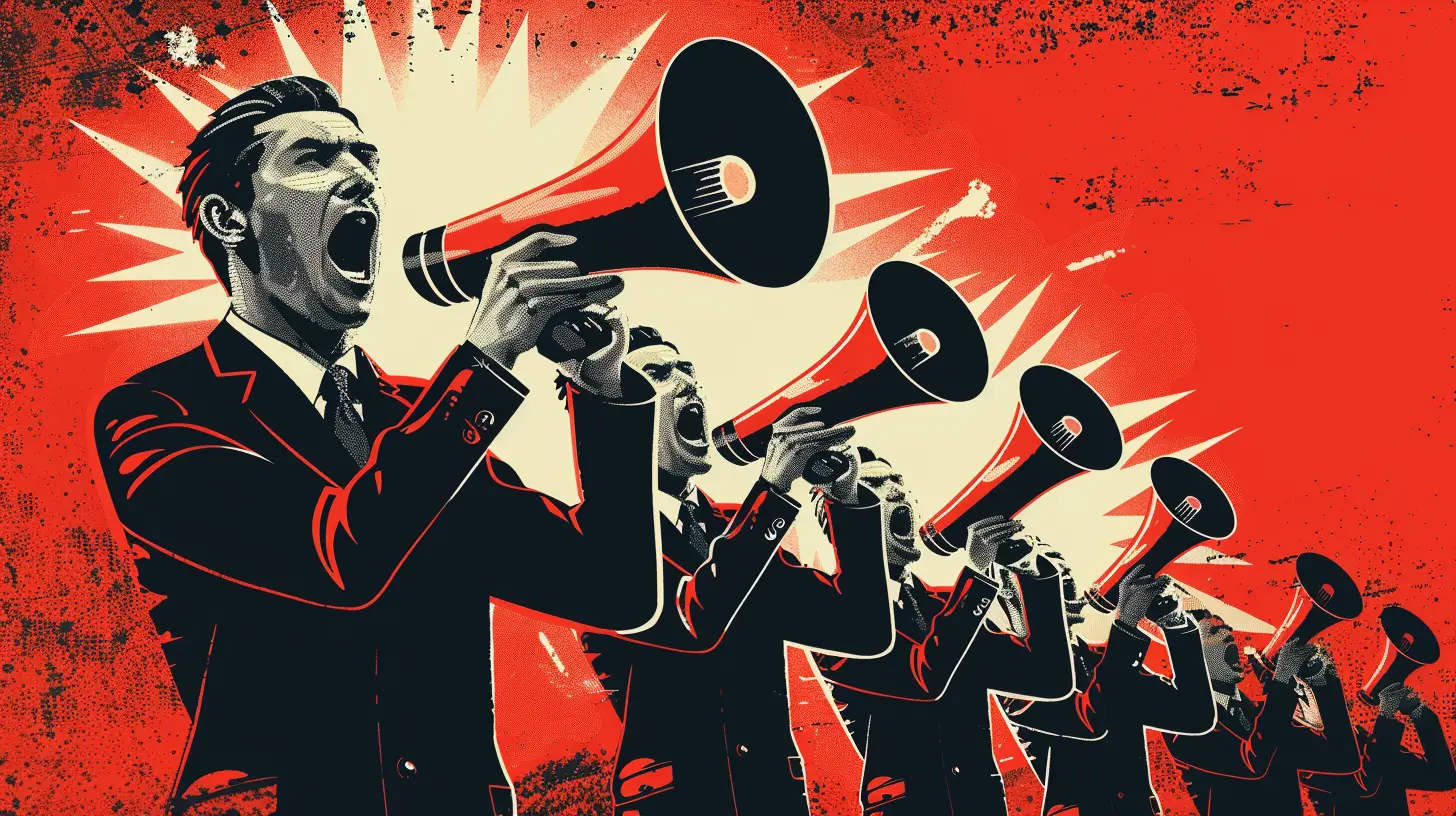Surviving a Social Media Backlash with a Strong PR Response Plan
26 May 2025
Let’s face it. Social media can be both a blessing and a curse. On a good day, it’s a space where businesses thrive, connect with their audience, and build a brand voice. But on a bad day? One poorly worded tweet or a moment of bad judgment can send a brand crashing into the whirlwind of a social media backlash. And let’s be honest—that whirlwind? It’s brutal, unpredictable, and can feel near-impossible to escape unscathed.
So, what can you do when the internet turns against you? The answer: Prepare ahead of time with a solid PR response plan. Think of it like packing a parachute before attempting a skydive; you hope you’ll never need it, but if something goes wrong, it might just save your life—well, in this case, your reputation.
In this article, we’ll dive into what it takes to survive a social media backlash, the importance of having a rock-solid PR plan, and actionable steps on how to execute it like a pro. 
Why Social Media Backlashes Are No Joke
Social media can amplify issues in a matter of minutes. What might have once been a small complaint whispered among a few customers can now snowball into a trending hashtag viewed by millions.But why are social media backlashes so intense?
1. Speed of Dissemination: A single negative post can go viral in hours, reaching thousands (or millions) of people.
2. Emotional Connection: People have personal ties to brands they love (or loathe), and they’re not shy about voicing their feelings.
3. Public Spectacle: Social media is a stage, and conflict or drama draws the crowd. Once an issue gains traction, everyone wants to chime in.
A backlash can tarnish your brand’s reputation, tank your sales, and erode trust with your audience. Sure, time heals wounds, but make no mistake—mishandling a backlash can leave a scar that never quite fades. 
The Power of a Proactive PR Response Plan
If you’re thinking, “Eh, my brand will probably never get caught in a social media storm,” think again. The reality is, no brand is immune. Whether you’re a small business or a multinational corporation, your best defense is preparation.A PR response plan is your roadmap through the chaos. It’s the equivalent of having a fire drill plan—when things get heated, you know exactly where to go, who to call, and how to avoid getting burned.
Without a proper plan, you’re left scrambling, making impulsive decisions, and possibly digging yourself an even deeper hole. (And let’s not pretend we haven’t seen brands try to “wing it” and fail spectacularly—remember that one time a major brand blamed their social media intern for a PR disaster? Yeah, not their finest hour.)
Step-by-Step Guide to Surviving a Social Media Backlash
1. Pause and Assess the Situation
First things first—don’t panic. Step away from the “post now” button. The internet moves fast, but that doesn’t mean your response has to be immediate. Take a deep breath.What’s actually happening? Is the backlash due to a misunderstanding? Was there a mistake on your end? Or is it something entirely out of your control? Assess the situation calmly and gather all the facts before jumping in with a response.
Pro Tip: Create a designated crisis response team ahead of time. These are the people you should call on to help analyze the situation and decide next steps.
2. Acknowledge the Issue
Here’s the thing—you can’t just stay silent and hope the storm will blow over. Ignoring the situation only adds fuel to the fire. People want to be heard, and they want to know you care.But remember, there’s a fine line between acknowledging and over-apologizing. You don’t want to admit guilt for something you didn’t do, but you also don’t want to come across as dismissive. Walk that line carefully.
Example:
Acknowledge the issue with a statement like:
“We’ve seen the recent concerns being shared, and we want to assure you we’re actively reviewing the situation. Please know we take this seriously.”
Does that sound like a cop-out? Nope. It shows accountability without jumping to conclusions.
3. Figure Out What Went Wrong
Once you’ve acknowledged the issue, roll up your sleeves and start digging. What caused this backlash?- Was there a poorly worded post?
- Did your product or service fall short of expectations?
- Was it a misunderstanding that spiraled?
This is the time to take honest stock of your mistakes—yes, even the cringey ones. Self-awareness is key here.
4. Apologize Authentically (If Necessary)
Here’s the golden rule: If you messed up, own it. People know when an apology is fake. Avoid the robotic, corporate-speak apologies. Nobody wants to hear, “We regret any inconvenience this may have caused.”Instead, be sincere. Use a tone that’s genuine and human. Admit your mistake, explain how you’ll fix it, and commit to doing better.
Example:
“We’re sorry for [specific issue]. This does not reflect who we are or the values we stand for. We’re taking immediate steps to fix this, including [specific actions].”
5. Take Action (And Show It!)
Apologies are nice, but actions speak louder than words. The internet does not want to hear you say you’re fixing things—they want to see it.- If it was a product issue, announce what changes you’re implementing.
- If it was a communication misstep, share how you’re retraining your team.
- For larger systemic issues, outline a long-term commitment plan.
Transparency is your best friend here. Show people the receipts—what, how, and when you’re making changes.
6. Stay Consistent with Messaging
This part? Crucial. Mixed messages confuse people and make your brand look untrustworthy. Whether it’s a tweet, press release, or IG story, your tone, facts, and message need to align.This is where having a PR response template comes in handy. (Pro tip: Prep one in advance!)
7. Engage Thoughtfully (But Don’t Feed the Trolls)
Yes, you should respond to valid concerns. Address questions, thank people for their feedback, and steer the conversation toward resolution.But know when to bow out. Some internet users aren’t looking for resolution—they just want to watch the world burn. Don’t waste your energy arguing with trolls or feeding negativity.
8. Learn from the Experience
The backlash is over. You survived. Now what?Look back at what went wrong and identify ways to prevent it from happening again. Use this as an opportunity to grow, refine your policies, and strengthen your PR strategy.
Remember: Brands that bounce back are the ones that show they’ve learned something from the experience. 
Examples of Brands That Handled Backlashes Like Pros
Need some inspiration? Here are a few brands that turned things around after a social media backlash:- KFC (UK): Remember when KFC ran out of chicken? Instead of panicking, they owned the mistake with a witty and self-aware campaign (“FCK” rebranding their bucket). It humanized their brand and turned backlash into chuckles.
- Nike: When faced with a controversial partnership backlash, Nike doubled down on their values. Sure, they lost some customers, but the brand loyalty they gained was worth it.
These examples prove that with the right response, you can actually come out stronger on the other side.
Final Thoughts
A social media backlash can feel like the end of the world, but it doesn’t have to be. With a strong PR response plan, a calm mind, and a willingness to learn, you can weather the storm and rebuild trust with your audience.Think of social media crises like potholes on the road to success. They’re frustrating, they’ll slow you down, but they’re not the end of the journey. And who knows? If you handle them well, they might even become part of your brand’s growth story.
all images in this post were generated using AI tools
Category:
Public RelationsAuthor:

Miley Velez
Discussion
rate this article
3 comments
June McPhail
In storms of backlash, a crafted voice shines; strong PR turns tides divine.
June 9, 2025 at 2:21 AM

Miley Velez
Thank you! A strong PR strategy is essential in navigating storms and turning challenges into opportunities.
Everett Wilcox
This article beautifully highlights the importance of proactive PR strategies. A thoughtful response can transform challenges into opportunities for growth. Thank you!
May 31, 2025 at 11:17 AM

Miley Velez
Thank you for your thoughtful comment! I'm glad you found the article insightful. Proactive PR truly makes a difference in navigating challenges.
Lillian Coffey
Proactive PR strategies can turn backlash into opportunity.
May 26, 2025 at 4:48 AM

Miley Velez
Absolutely! Proactive PR not only mitigates backlash but can also transform challenges into valuable opportunities for growth and improved engagement.



